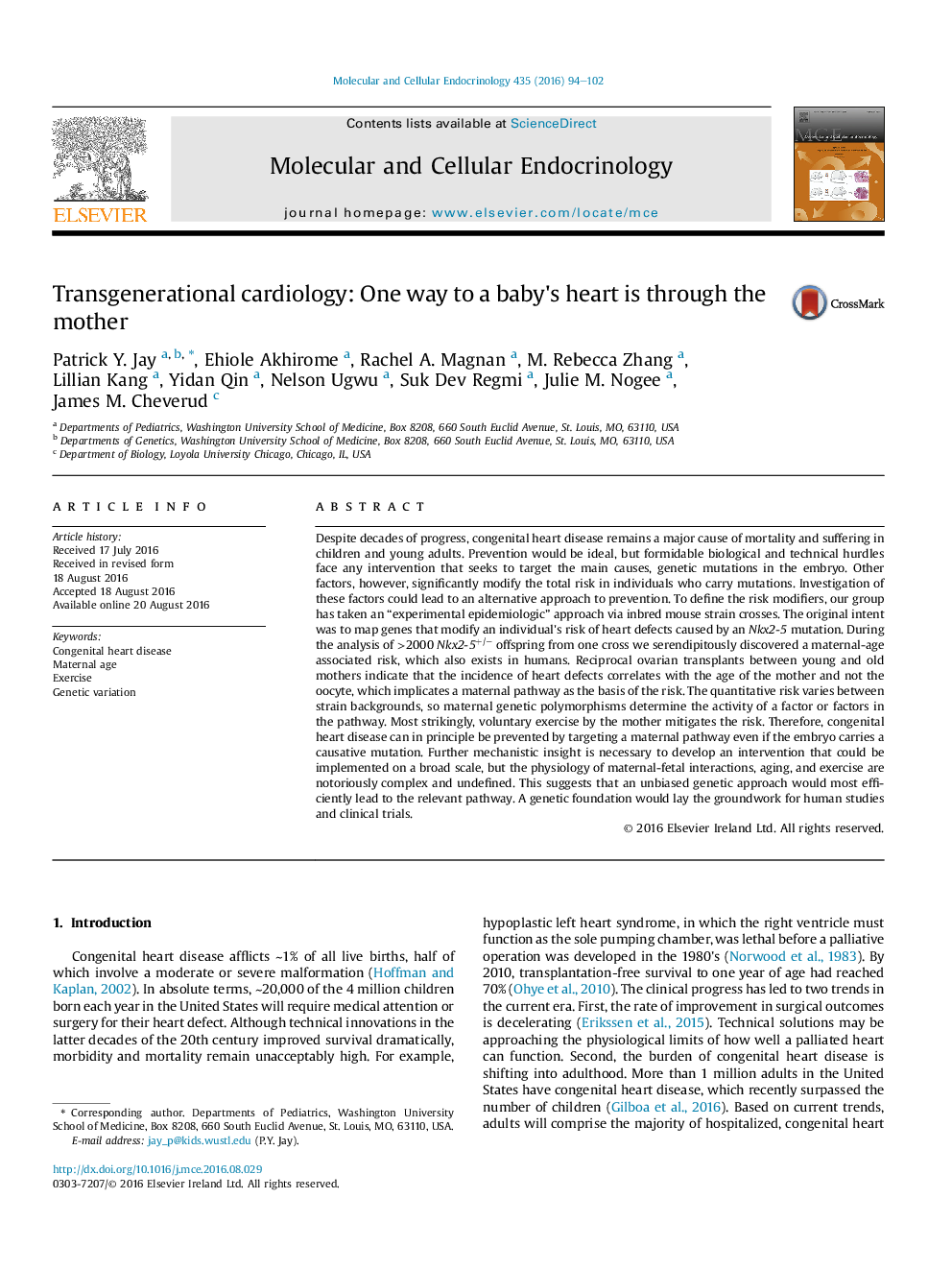| کد مقاله | کد نشریه | سال انتشار | مقاله انگلیسی | نسخه تمام متن |
|---|---|---|---|---|
| 2195488 | 1550844 | 2016 | 9 صفحه PDF | دانلود رایگان |
• Risk factors for congenital heart disease may suggest a means of prevention.
• Maternal age is a risk factor in humans and in a mouse model.
• The mechanistic basis of the risk resides in the mother and not the oocyte.
• Maternal exercise and genetic polymorphisms mitigate the age-associated risk.
• An unbiased genetic approach should most efficiently define the maternal pathways.
Despite decades of progress, congenital heart disease remains a major cause of mortality and suffering in children and young adults. Prevention would be ideal, but formidable biological and technical hurdles face any intervention that seeks to target the main causes, genetic mutations in the embryo. Other factors, however, significantly modify the total risk in individuals who carry mutations. Investigation of these factors could lead to an alternative approach to prevention. To define the risk modifiers, our group has taken an “experimental epidemiologic” approach via inbred mouse strain crosses. The original intent was to map genes that modify an individual's risk of heart defects caused by an Nkx2-5 mutation. During the analysis of >2000 Nkx2-5+/− offspring from one cross we serendipitously discovered a maternal-age associated risk, which also exists in humans. Reciprocal ovarian transplants between young and old mothers indicate that the incidence of heart defects correlates with the age of the mother and not the oocyte, which implicates a maternal pathway as the basis of the risk. The quantitative risk varies between strain backgrounds, so maternal genetic polymorphisms determine the activity of a factor or factors in the pathway. Most strikingly, voluntary exercise by the mother mitigates the risk. Therefore, congenital heart disease can in principle be prevented by targeting a maternal pathway even if the embryo carries a causative mutation. Further mechanistic insight is necessary to develop an intervention that could be implemented on a broad scale, but the physiology of maternal-fetal interactions, aging, and exercise are notoriously complex and undefined. This suggests that an unbiased genetic approach would most efficiently lead to the relevant pathway. A genetic foundation would lay the groundwork for human studies and clinical trials.
Journal: Molecular and Cellular Endocrinology - Volume 435, 5 November 2016, Pages 94–102
